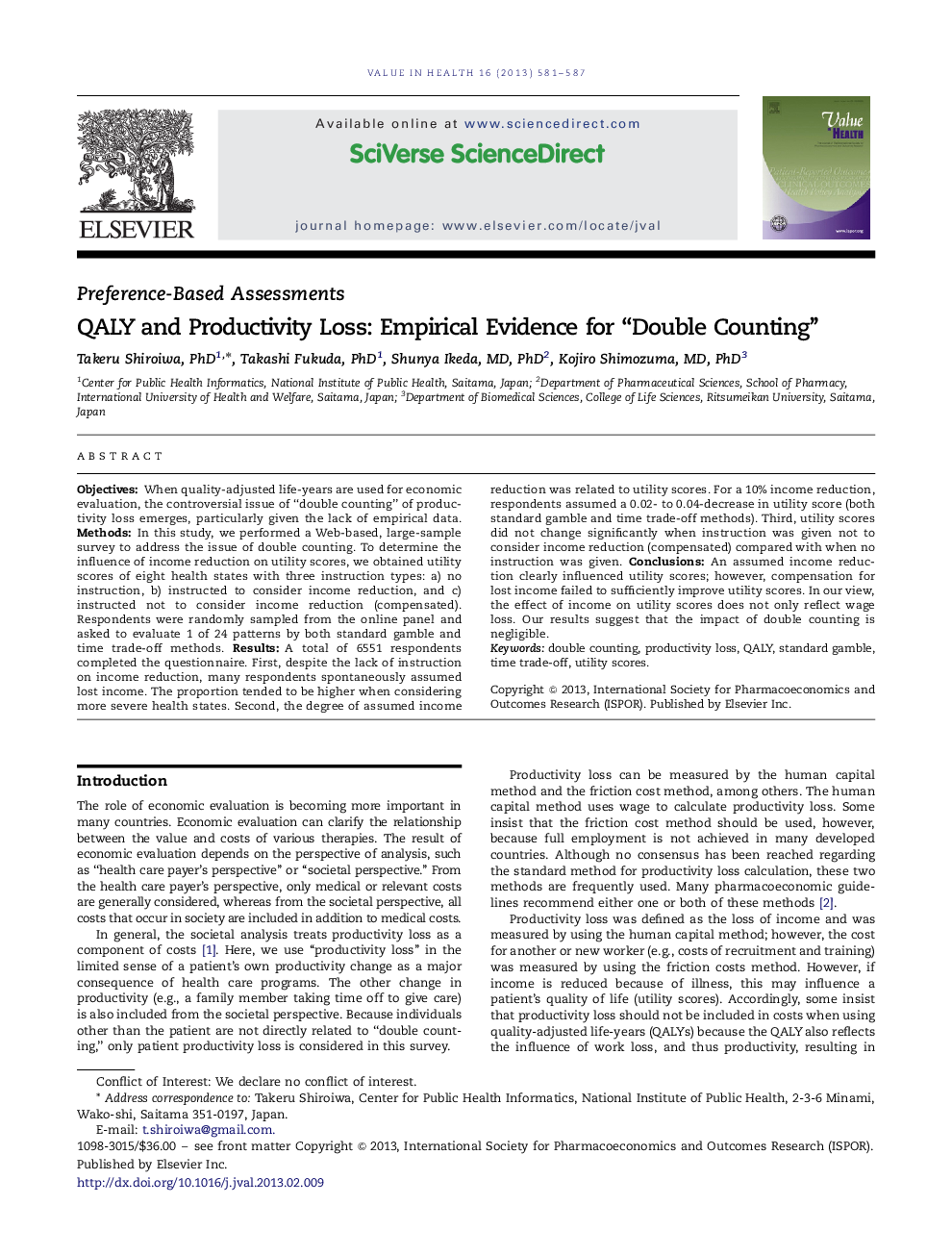| Article ID | Journal | Published Year | Pages | File Type |
|---|---|---|---|---|
| 989321 | Value in Health | 2013 | 7 Pages |
ObjectivesWhen quality-adjusted life-years are used for economic evaluation, the controversial issue of “double counting” of productivity loss emerges, particularly given the lack of empirical data.MethodsIn this study, we performed a Web-based, large-sample survey to address the issue of double counting. To determine the influence of income reduction on utility scores, we obtained utility scores of eight health states with three instruction types: a) no instruction, b) instructed to consider income reduction, and c) instructed not to consider income reduction (compensated). Respondents were randomly sampled from the online panel and asked to evaluate 1 of 24 patterns by both standard gamble and time trade-off methods.ResultsA total of 6551 respondents completed the questionnaire. First, despite the lack of instruction on income reduction, many respondents spontaneously assumed lost income. The proportion tended to be higher when considering more severe health states. Second, the degree of assumed income reduction was related to utility scores. For a 10% income reduction, respondents assumed a 0.02- to 0.04-decrease in utility score (both standard gamble and time trade-off methods). Third, utility scores did not change significantly when instruction was given not to consider income reduction (compensated) compared with when no instruction was given.ConclusionsAn assumed income reduction clearly influenced utility scores; however, compensation for lost income failed to sufficiently improve utility scores. In our view, the effect of income on utility scores does not only reflect wage loss. Our results suggest that the impact of double counting is negligible.
